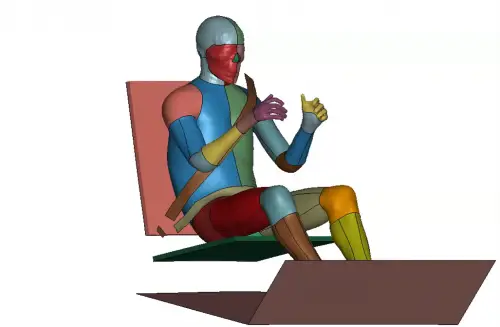Finite Element Human Body Models (FE HBMs) have emerged as indispensable tools in the realm of vehicular safety research and design. However, their efficacy has often been hampered by a lack of versatility due to a limited range of available forms. Addressing this issue head-on, Emanuele Lombardi’s groundbreaking thesis, “Human Body Models customization by advanced mesh morphing: parametric THUMS,” introduces a novel strategy aimed at expanding the applicability of these models.
Presented at the Automotive CAE Grand Challenge 2024 in Frankfurt-Hanau, Germany, on April 17, 2024, Lombardi’s work revolutionizes the field by proposing a method to customize FE HBMs through sophisticated mesh morphing techniques. The core concept involves modulating the shape variances between two prominent FE HBMs, THUMS AM50 and THUMS AM95, utilizing radial basis functions (RBF) for mesh morphing, and implementing the process automatically with Python scripting.
The significance of this approach lies in its ability to bridge the gap between the limited forms of existing FE HBMs and the diverse anthropometric profiles of real-world populations. By leveraging RBF-driven mesh morphing, Lombardi’s method enables the creation of parametric THUMS models that can approximate the statistical anthropometric percentile of a broader range of individuals.
Central to Lombardi’s thesis is the validation of the proposed methodology through rigorous testing. The parametric THUMS models generated using the advanced mesh morphing technique are subjected to frontal sled tests conducted in LS DYNA. These simulations serve to validate the effectiveness of the modeling choices and demonstrate the potential of the customized FE HBMs in accurately predicting human responses to crash scenarios.
The implications of Lombardi’s work extend far beyond the confines of academic research. By enabling the customization of FE HBMs to better reflect diverse human anatomies, this approach holds immense promise for enhancing vehicle safety standards. Manufacturers and automotive engineers stand to benefit significantly from the ability to conduct more realistic simulations tailored to specific demographics, thereby mitigating risks associated with road accidents.
You can read the presentation and the full thesis here.



